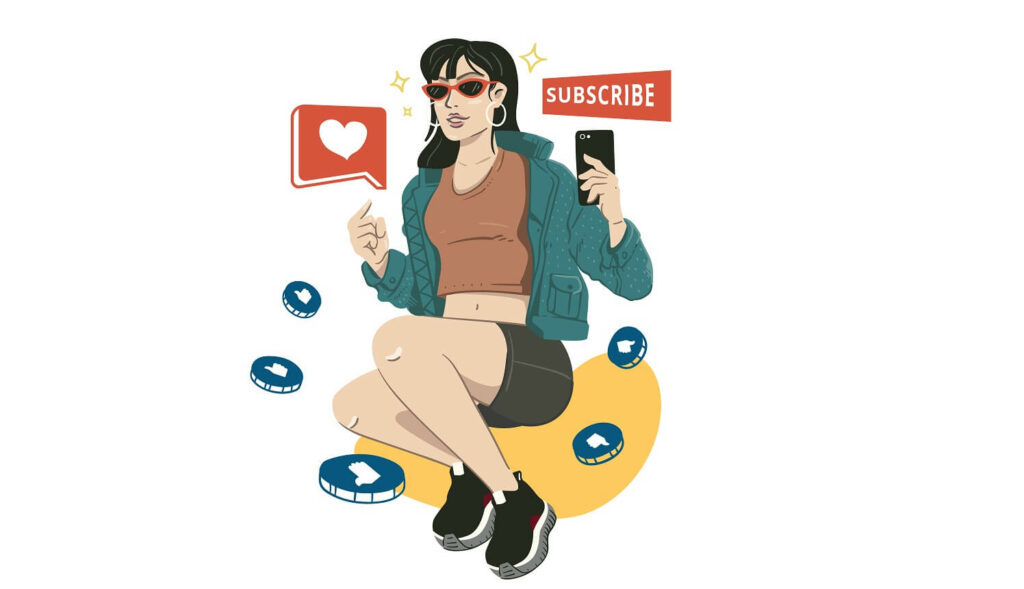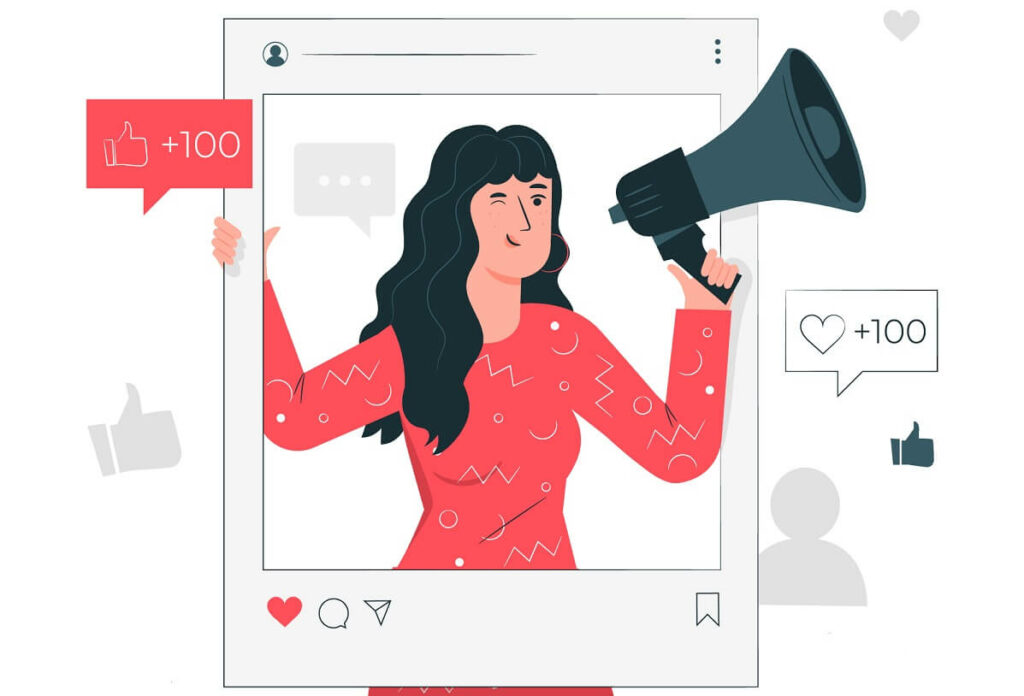We encounter thousands of adverts every day when we use the Internet. In a single day, the average person may view anything from 4,000 to 10,000 advertisements. Advertisers have flooded our life, from binge-watching your favorite shows to checking the stack of coupons in your mailbox. But what are the persuasive techniques in advertising?
Table of contents
The psychology of persuasion
When competing against a lot of marketers, you must worry about persuasive marketing which is the key to reaching the correct users and promoting brand conversions.
By definition, persuasion is the act or process of providing arguments to persuade, motivate or alter someone’s mind.
From negotiating sales agreements to establishing weekend arrangements with your pals, people use persuasion in various circumstances. It’s all about understanding the other person’s motives (or concerns) and appealing to them to sway their decision.
Therefore, entrepreneurs must persuade their targeted customers that the thing they are selling is appropriate for them. On the other side, many organizations fail to find the proper digital marketing approach, causing them to struggle to grow. But what are the key persuasive techniques used in consumer advertising?
Aristotle developed some types of persuasive techniques in advertising to appeal to people and build trust. These types are the three persuasive techniques: pathos, logos and ethos in advertising:
Ethos: Endorsing a product with likable celebrities or respected experts.
Pathos: The use of emotional experiences to connect with and persuade people.
Logos: The use of facts or data to persuade others.

Ethos
The purpose of ethos in advertising is to persuade the audience that the advertiser is trustworthy and ethical. Isn’t it simpler to make a decision when someone you respect or look up to approves it?
Moreover, marketers often use ethos rhetoric to connect a brand to fundamental human rights. When a brand takes a position for a cause that is important to them, it builds trust with its audience. The imagery of ordinary, regular people is frequently used in ethos discourse.
This method is known as the Plain Folks persuasive advertising tactic, in which a speaker or company appears as an Average Joe to make them feel normal and reasonable. They look concerned and cut from the same material as you by doing so.
If a renowned celebrity like Kevin Hart drinks Mountain Dew on TV, a person viewing the advertisement is more inclined to buy a six-pack.
The celebrity or well-known endorser offers credibility and dependability with ethos appeals. This is conveyed both as a representative of the brand and as the brand itself. How? What does ethos imply to the audience?
When a celebrity appears in a commercial or campaign promoting a product or service, viewers associate the celebrity’s influence with the brand’s status.
Pathos
Advertisements with pathos touch the audience’s heartstrings and make them feel stuff. Is there a quick technique to elicit a viewer’s emotions? An adorable animal. A sad family. A love tale. Overcoming adversity. A beautiful song with beautiful images.
However, it can be negative, as in a person having back pain and feeling the need to take painkillers. It can also elicit remorse, as in seeing an ad that urges the viewer to adopt a puppy before they put it down. This type of technique will evoke pity, energy, or perhaps make a spectator cry. Therefore, it creates an emotional and compassionate pitch.
Ads with pathos include:
- Adorable polar bears drinking Coke
- Cuddly kittens are looking for a home
- A young boy’s mother dies as a result of her smoking
Are you worried that using a pathos marketing strategy would come off as too sentimental or cheesy? That’s a risk, but it’s a risk worth taking.

Logos
Logos is a persuasive technique in advertising that uses rationality to persuade the public. Some examples in advertising include the reference of numbers, facts, data, tables, and graphs. Furthermore, it’s often known as “the logical appeal.”
Advertisement logos examples:
- An advertisement for a phone that showcases the latest features and specifications
- A fruit juice advertisement that emphasizes vitamin and calorie content
- A phone company displays a map to demonstrate that it has superior coverage versus the competitors
The goal of logos rhetoric is to appeal to the intellect rather than the heart. However, not everyone is a rational person. The power of logos has its limits. But when it works, there’s nothing more remarkable. Accurate facts and logic do not lie.
Common types of ad strategies
Advertisers employ a variety of marketing tactics to provide a distinct product proposition while also raising brand recognition and sales. Here is a seven advertising persuasive techniques list that every copywriter should be aware of:
1. The “before and after”
This persuasive technique in advertising may be used to illustrate life without the product and afterward living with it. In general, you’d display a bad visual impression of life prior to the product, followed by a good image thereafter. This method aids you in demonstrating the worth and significance of your goods.
2. The “advice”
This is a lateral marketing approach that says, “we can help you.” You may use this to communicate the value of your product or service. For example, to sell more milk, you might highlight that everyone has to ingest protein daily.
3. The “empathy”
Use this persuasive technique in advertising to increase the audience’s empathy with a specific demographic. For example, a non-profit organization can display photos of sick children to elicit sympathy for the youngsters. This strategy can assist a non-profit organization in raising cash.
4. The “testimonial”
This strategy uses a famous or not-so-famous consumer to promote a brand’s product’s quality or advantages. A professional basketball player, for example, can boost the quality of Nike basketball shoes by wearing a pair of Nike basketball shoes.

5. The “demonstration”
This persuasive technique in advertising focuses entirely on ways to demonstrate the product’s advantages through a “demonstration.” When Jean-Claude Van Damme did a split on two reversing Volvo trucks, for example, he showed the trucks’ stability and dependability.
6. The “comparison”
Make an overt or subtle allusion to any contrasts between your product and a competitor’s offering. A famous example is Apple’s Mac and PC commercial, which directly contrasted Mac features to PC features to demonstrate Mac computers’ superiority.
7. The “negative to positive”
By adding an extra or clever argument, you may change a dull or lousy view of a product, brand, or market into a good one. For example, Volkswagen’s iconic “Think Tiny” commercial subverted the popular American idea that “larger is better” by demonstrating the benefits of having a small car, such as lower expenses and parking spots.
Persuasive techniques in video advertising
You cannot underestimate the importance of social evidence in building your company’s reputation. Current customers’ recommendations build trust in your company, and potential consumers appreciate the “tried-and-true” information your testimonials give.
Authenticity is crucial in a video testimonial. To enhance the impact (and credibility) of a customer’s story, you should emphasize telling it in their own words.
A video testimonial is more detailed than a written review. They’re also more accessible for an audience to absorb passively. Both audio and visual learners will benefit from them. They are both appealing and shareable when they are well-produced.

1. Show specific results
One of the most influential aspects of a good testimonial video is specificity, which gives data points for your potential leads to grabbing onto and helps them envision how your product or service concretely benefits them. The more you can get people to visualize your brand serving their specific use case, the better.
2. Capture real moments
Consider the case of a business that makes energy drinks. You may provide a unique take on client feedback by filming a succession of taste-testers’ genuine responses to the energy drink in real-time. This allows them to give a brief product pitch and then let the consumer reactions do the selling. The real-time element adds to the video’s authenticity.
3. Layer your testimonials with the results
It’s one thing to see how pleased consumers are, but seeing the finished goods in person truly closes the deal.
The main point is that you shouldn’t be hesitant to show off why your customers are so ready to provide testimonials! You receive the best of both worlds. A genuine recommendation from a happy customer, as well as evidence of your superiority.
4. Exclusivity
Consider someone who says, “I really don’t want to disclose my secrets, but…absolutely.” The individual can provide the brand an aura of exclusivity in only one statement.
Building credibility through social evidence from other pleased customers is one of the essential aspects of a customer testimonial. Your testimonials should address any concerns your potential customers may have about your company. So when you get a quotation like the one above, you know you’ve hit on something your competitors don’t have. After all, if it provides you an advantage over your competitors, it must be beneficial.

5. Prioritize emotions
Sharing good data might be a great approach to appeal to specific customers, but creating emotional connections is more powerful. It should ideally be the foundation of every video testimonial you make.
You might envelop the spectator in a warm embrace. And the reality is that your potential customers will need to have an emotional bond with you before buying from you. It’s usually a good idea to emphasize the emotional pull that your brand has.
6. Different demographics
It’s an excellent decision to make two distinct testimonials. One from one point of view and the other from a different point of view. You may appeal to two specific audiences and give various viewpoints on the same event this way.
To appeal to all of your leads, you should use client testimonials from a variety of consumers. You should include people of diverse ages, races, genders, and backgrounds.
Testimonial persuasive techniques examples
There are some persuasive techniques in advertising examples you can study when it comes to testimonials. Here are the most common ones:
Celebrity testimonial
Celebrity endorsements may be a firm testimony tactic in a culture where ordinary people are captivated with the affluent and famous. When you identify the promoted product or service with the celebrity’s image or specialization, these endorsements are most successful. A professional athlete, for example, can promote the advantages of a piece of athletic equipment, while a beautiful movie actress might promote a line of beauty goods.
George Clooney and Nespresso are two examples. They successfully communicated Nespresso’s image as a refined and beautiful brand.
Michael Jordan and Nike are another well-known example. The collaboration led to the creation of a new product range.
These sponsorships not only brought in billions of dollars for the businesses (and steady payments for the celebrities), but they also increased favorable exposure, exposure, and engagement.

Expert testimonial
The expert opinion approach highlights the advantages of more sophisticated items. A doctor in a white lab coat may extol the efficacy of a new drug or medical treatment, while an engineer might tout the advantages of a piece of safety gear. The endorser’s experience in the industry lends credibility to the product or service and can help consumers overcome their apprehensions about trying something new.
A great example is Colgate. They bring in specialized dentists in white coats, sitting in their clinic to talk about their toothpaste.
Person on the street testimonial
A testimonial approach used to assist buyers to identify with a product is the “man-on-the-street” interview. Instead of relying on the opinion of a celebrity or expert to establish credibility, this technique aims to demonstrate customer happiness through a user who resembles members of the target demographic in many aspects. You ask the person to sample a new product, and they appear to appreciate it. The message will say afterward, “If this individual enjoys it, you will, too.”
Satisfied customers testimonials
You can find testimonials from happy customers in the form of letters that appear in print ads. Frequently, the letters from long-time customers praise the product or service and explain how it has improved their lives. Each remark, on average, focuses on one specific advantage provided by the product or service. It takes the form of time or money savings, the convenience of use, cheap cost, or quickness of results.
Conclusion
Persuasive advertising is vital to a company’s digital media strategy. There are many different persuasion tactics in marketing, and you should think about what values you can provide to your user. You’ll be able to figure out an acceptable approach that fits your needs as a result of this.
You may enhance your target audience’s impression of your brand, establish the superiority of your products over your rivals, or directly explain the value of your offers by employing the strategies listed above. These basic persuasive techniques in advertising can help you raise brand awareness and appeal, as well as sales.




